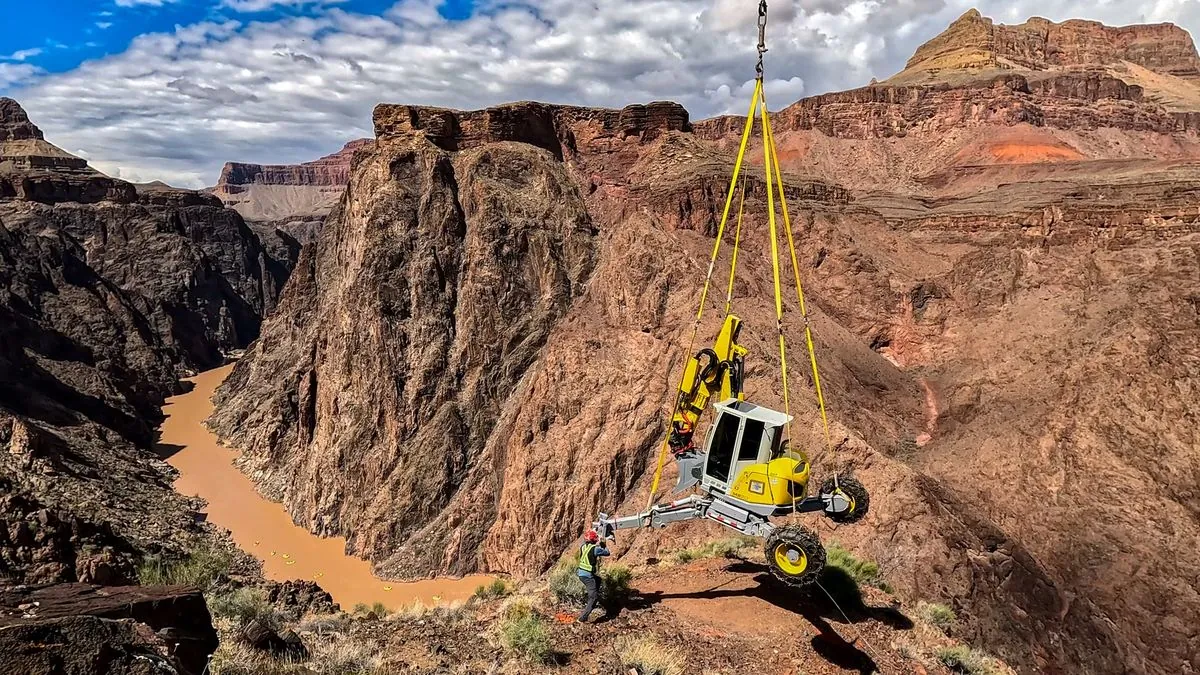Grand Canyon Halts Overnight Stays Amid Water Crisis
Grand Canyon National Park restricts overnight accommodations due to waterline breaks. Day visits continue, but visitors urged to conserve water as $208 million rehabilitation project progresses.

Grand Canyon National Park has implemented unprecedented restrictions on overnight stays due to a series of breaks in its sole water pipeline. This decision, affecting the upcoming Labor Day holiday, highlights the ongoing challenges faced by one of America's most iconic natural landmarks.
The Transcanyon Waterline, a 12.5-mile (20-kilometer) pipeline constructed in the 1960s, has surpassed its expected lifespan. Since 2014, it has experienced over 85 major disruptions, underscoring the urgent need for infrastructure upgrades in this UNESCO World Heritage site.
Park spokesperson Joelle Baird emphasized the unique difficulties in repairing the pipeline, particularly in an area known as "the box," where high temperatures and the risk of rock falls pose significant safety concerns for maintenance crews.

Despite these challenges, the park remains open for day visits. However, all South Rim accommodations, including the historic El Tovar Hotel and Phantom Ranch, have suspended overnight stays. The North Rim's Grand Canyon Lodge continues to operate normally.
To address the water crisis, park officials have initiated a $208 million rehabilitation project for the water delivery system, scheduled for completion by 2027. This ambitious undertaking aims to meet the needs of the park's approximately 6 million annual visitors and 2,500 year-round residents.
In the interim, visitors and residents are urged to implement water conservation measures, such as limiting showers to five minutes, selectively flushing toilets, and only washing full loads of laundry.
The Grand Canyon, carved by the Colorado River over millions of years, boasts a depth averaging about 1 mile (1.6 km) and spans 277 miles (446 km) in length. Its rock layers represent nearly 2 billion years of Earth's geological history, making it a treasure trove for scientists and nature enthusiasts alike.
As one of the Seven Natural Wonders of the World, the Grand Canyon has been a site of human habitation for millennia. The oldest human artifacts discovered in the area date back almost 12,000 years, with Native American communities maintaining a deep connection to this sacred landscape.
The park's diverse ecosystem supports over 1,500 plant species, adapting to temperature variations that can reach up to 20°F (11°C) between the rim and the canyon floor. This biodiversity, coupled with the canyon's awe-inspiring vistas, continues to draw millions of visitors each year, even as the park grapples with infrastructure challenges.
As efforts to restore full operational status continue, the current water crisis serves as a reminder of the delicate balance between preserving natural wonders and managing the infrastructure necessary to support tourism and conservation efforts.


































